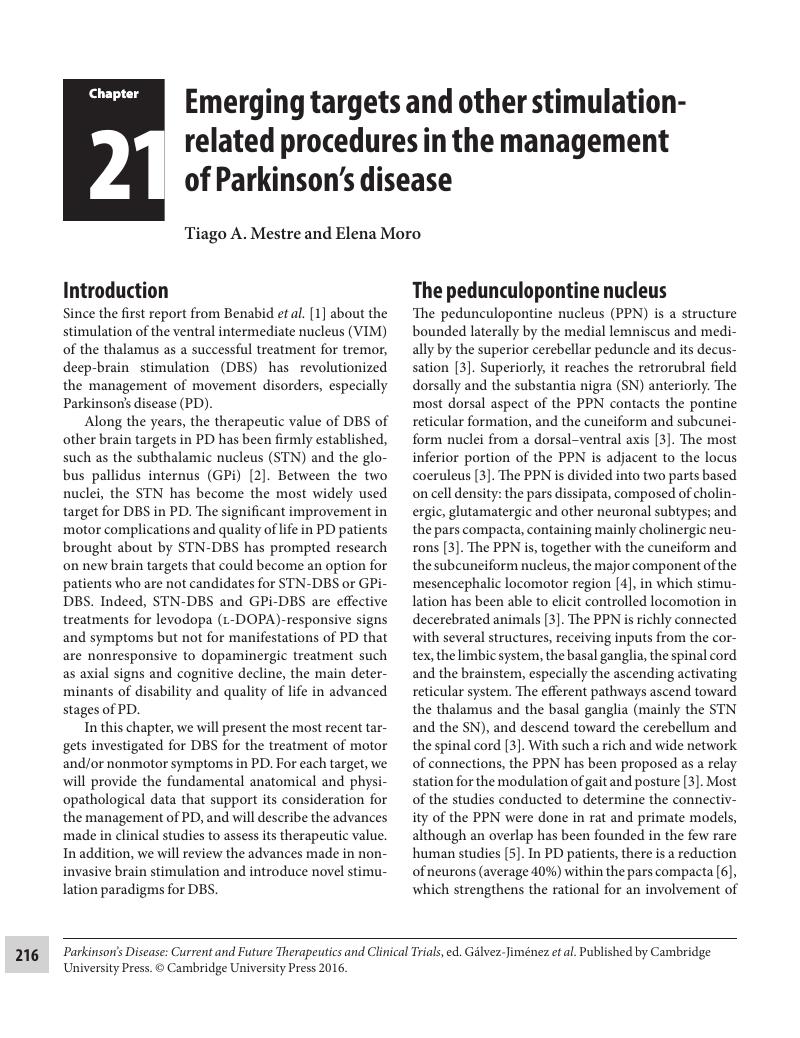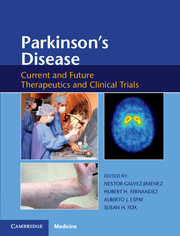Book contents
- Parkinson's DiseaseCurrent and Future Therapeutics and Clinical Trials
- Parkinson's Disease
- Copyright page
- Contents
- Contributors
- Book part
- Section I The Pharmacological Basis for Parkinson's Disease Treatment
- Section II Management of Nonmotor Symptoms of Parkinson's Disease
- Section III Surgical Management of Parkinson's Disease
- Chapter 17 Thalamotomy, pallidotomy and subthalamotomy in the management of Parkinson's disease
- Chapter 18 Deep-brain stimulation of the globus pallidus internus in the management of Parkinson's disease
- Chapter 19 Deep-brain stimulation of the subthalamic nucleus in the management of Parkinson's disease
- Chapter 20 Deep-brain stimulation of the thalamic ventral intermediate nucleus in the management of Parkinson's disease
- Chapter 21 Emerging targets and other stimulation-related procedures in the management of Parkinson's disease
- Section IV Clinical Trials in Parkinson's Diease: Lessons, Controversies and Challenges
- Index
- References
Chapter 21 - Emerging targets and other stimulation-related procedures in the management of Parkinson's disease
from Section III - Surgical Management of Parkinson's Disease
Published online by Cambridge University Press: 05 March 2016
- Parkinson's DiseaseCurrent and Future Therapeutics and Clinical Trials
- Parkinson's Disease
- Copyright page
- Contents
- Contributors
- Book part
- Section I The Pharmacological Basis for Parkinson's Disease Treatment
- Section II Management of Nonmotor Symptoms of Parkinson's Disease
- Section III Surgical Management of Parkinson's Disease
- Chapter 17 Thalamotomy, pallidotomy and subthalamotomy in the management of Parkinson's disease
- Chapter 18 Deep-brain stimulation of the globus pallidus internus in the management of Parkinson's disease
- Chapter 19 Deep-brain stimulation of the subthalamic nucleus in the management of Parkinson's disease
- Chapter 20 Deep-brain stimulation of the thalamic ventral intermediate nucleus in the management of Parkinson's disease
- Chapter 21 Emerging targets and other stimulation-related procedures in the management of Parkinson's disease
- Section IV Clinical Trials in Parkinson's Diease: Lessons, Controversies and Challenges
- Index
- References
Summary

- Type
- Chapter
- Information
- Parkinson's DiseaseCurrent and Future Therapeutics and Clinical Trials, pp. 216 - 230Publisher: Cambridge University PressPrint publication year: 2016



